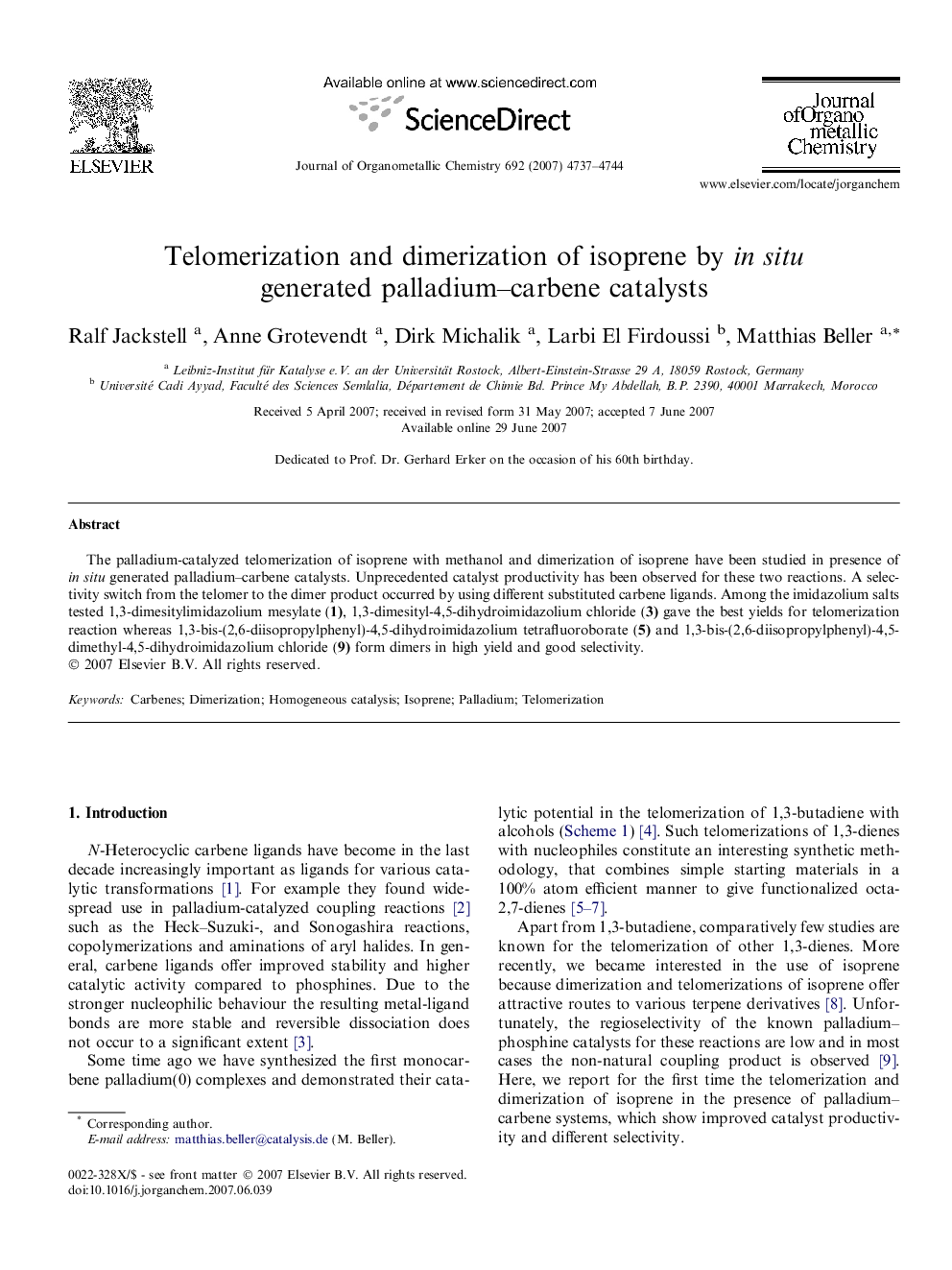| Article ID | Journal | Published Year | Pages | File Type |
|---|---|---|---|---|
| 1328231 | Journal of Organometallic Chemistry | 2007 | 8 Pages |
The palladium-catalyzed telomerization of isoprene with methanol and dimerization of isoprene have been studied in presence of in situ generated palladium–carbene catalysts. Unprecedented catalyst productivity has been observed for these two reactions. A selectivity switch from the telomer to the dimer product occurred by using different substituted carbene ligands. Among the imidazolium salts tested 1,3-dimesitylimidazolium mesylate (1), 1,3-dimesityl-4,5-dihydroimidazolium chloride (3) gave the best yields for telomerization reaction whereas 1,3-bis-(2,6-diisopropylphenyl)-4,5-dihydroimidazolium tetrafluoroborate (5) and 1,3-bis-(2,6-diisopropylphenyl)-4,5-dimethyl-4,5-dihydroimidazolium chloride (9) form dimers in high yield and good selectivity.
Graphical abstractThe palladium-catalyzed telomerization of isoprene with methanol and dimerization of isoprene has been studied in presence of palladium and imidazolium salts, which form in situ carbene ligands. A selectivity switch from the telomerization to the dimerization product occurred by using different substituted ligands.Figure optionsDownload full-size imageDownload as PowerPoint slide
